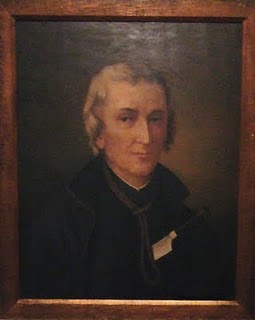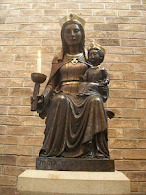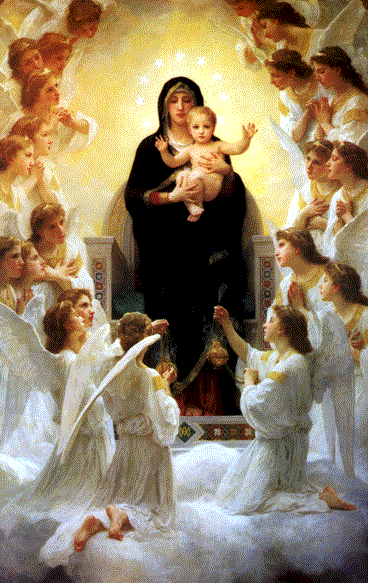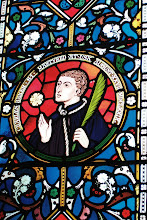 Titus Oates was born in Oakham, Rutland, in 1649. Perhaps it is easy to see how he developed into the squalid little man he became when one looks at his father, Samuel. Samuel appears to have been a man of weak character with no true commitment to religion of any kind. He preferred to follow whichever was to his best material advantage. At one time Samuel was Anglican rector of Marsham; in Cromwell’s time he was a Baptist minister; at the Restoration he became an Anglican again and, eventually, reverted to the Baptist faith.
Titus Oates was born in Oakham, Rutland, in 1649. Perhaps it is easy to see how he developed into the squalid little man he became when one looks at his father, Samuel. Samuel appears to have been a man of weak character with no true commitment to religion of any kind. He preferred to follow whichever was to his best material advantage. At one time Samuel was Anglican rector of Marsham; in Cromwell’s time he was a Baptist minister; at the Restoration he became an Anglican again and, eventually, reverted to the Baptist faith.The young Titus was reputed to be of a dubious character and not a very able student who was expelled from several colleges. Nonetheless, he became an Anglican vicar. While he was serving as vicar in a parish in Kent, he was imprisoned for perjury, having accused a schoolmaster in Hastings of a serious crime. Oates escaped and fled to London. He then managed to secure an appointment as chaplain of an English Navy ship. He again fell foul of the law and was accused of a capital offence.
On Ash Wednesday 1677, Titus Oates was received into the Catholic Church. He was later to claim that he had done this only to infiltrate the Jesuits and learn their secrets. Convinced of his sincerity, the Jesuit Provincial, Richard Strange, helped him to gain admittance to the Jesuit colleges, first at Valladolid and then at St Omer. The new Provincial, Thomas Whitbread, was decidedly unimpressed with Oates and, in June 1678, had him expelled from the college.
Oates returned to London where he revived his friendship with Israel Tonge, a clergyman whom he had met through his indecisive father, Samuel. Titus Oates told Tonge that while he was at the college he had learned of a planned meeting of Jesuits in London. The two scoundrels concocted a fearsome tale of murder and sedition. Supposedly there was a Catholic inspired plot to murder the King, Charles II, and to rid the country of Protestantism by placing the King’s Catholic brother, James Duke of York, on the throne. According to them, the masterminds of this imagined plot were the Jesuits in England who were to carry out the regicide.
Oates and Tonge wrote a numbered 43 paragraph manuscript detailing the fictional plot. The pair then arranged for an intermediary, Christopher Kirkby, to present it to the King. On 13th August 1678, as the King was walking in St James’s Park, Kirkby presented him with the manuscript. Though Charles was a Protestant, his wife was a Catholic and he was a man who tried to rule with tolerance. The King’s life had once been saved by Catholics and he dismissed the plot as so much nonsense. However, he handed the matter over to his minister, the Earl of Danby. Sir Edmund Berry Godfrey was appointed to investigate the plot and Titus Oates gave a deposition before him. It was a boon for Oates when, shortly after, the magistrate was found dead. Of course, Catholics were blamed for the murder (if murder it was) and with Oates fanning the flames, the whole country was soon ablaze with fear and hatred of Catholics. In the frenzy that swept the country, many innocent Catholics were executed. Among them were eight Jesuit priests: William Ireland, John Gavan, William Harcourt, Anthony Turner, Thomas Whitbread, John Fenwick, Philip Evans and David Lewis.
ANNUAL PILGRIMAGE IN HONOUR OF ST DAVID LEWIS
SUNDAY, 29th AUGUST 2010
3:00 p m - MASS AT SS FRANCIS XAVIER AND DAVID LEWIS CHURCH, PORTH-Y-CARNE STREET, USK
PROCESSION TO THE MARTYR'S GRAVE
REFRESHMENTS IN THE PARISH HALL








.JPG)

.JPG)






I was "tagged" this weekend and asked to share some of my favorite prayers. Now I'm tagging you! Please visit my blog to see the directions.
ReplyDeleteHello Sr Ann Marie
ReplyDeleteThanks for including me. I have now posted my three favourite prayers. God bless you Sister.